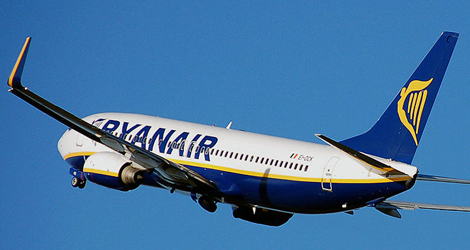Ryanair flight FR058 departed London Stansted , the aircraft climbed to its allotted cruising level, with the Captain as the Pilot Flying (PF) and the First Officer as the Pilot Not Flying (PNF).
This was the PF’s last day of duty for the Operator. He would be returning to his native Australia within days, as planned.
The flight continued normally as programmed in the Flight Management Computer (FMC) until Top of Descent (TOD) was reached. This is the point where the cruise phase changes to the descent phase. The Mode Control Panel (MCP) attitude selector would normally be set to Descent, but the PF of Ryanair flight FR058 inexplicably maintained ALT HOLD, which effectively kept the aircraft at its cruise level.
The PNF was aware of passing TOD but did not comment on it at the time.
The weather was generally fine with scattered cloud and good visibility. Air Traffic Control (ATC) cleared Ryanair flight FR058 for a visual approach to RWY 08 at Skavsta.
The PF commenced his descent sometime after TOD. The approach checklist was accomplished at or before Flight Level (FL) 100 and it was about this point that the PNF became concerned as the runway was becoming more visual. He recalled that the runway profile did not look normal to him, it did not look as if it was at the proper angle from his perspective.
The PF, in his written statement, said that the aircraft “was high above the standard profile” at this time. He was now flying with the Auto Pilot (AP) disengaged. Autothrust was disengaged at 6,050 ft.
He called the PNF to start extending flaps. He gave Flap 1 at about 235 kt, he recalled, and then selected landing gear down at about 5,700 ft. The PF called for more flaps while he “increased the rate of descent to establish on the glide profile dictated by the PAPI’s” (Precision Approach Path Indicators) on RWY 08.
The PNF of Ryanair flight FR058 recalled that this nose pitch down angle may have exceeded 10° with an accompanying increase in airspeed, up to 270 kt was reached, with Flap 5 selected. Concurrently, the Ground Proximity Warning System (GPWS) alarm sounded once and later a second time during the latter part of the approach. The PF recalled that the PNF “brought the excess in speed to his attention several times”, but that “his call was to continue thinking at the time he would be able to rescue the approach”.
The PNF made the comment that the PF was “fixated on trying to fly the aircraft on to the runway”. Because of the high speeds, he recalled, he could only select Flap 10 for the landing, at about 210 kt (standard landing flap setting is Flaps 30). At no time did he call for a Go-Around (GA). His inputs of “too high” or “too fast” were effectively being ignored. Consequently, he said, a stabilized approach was not achieved, as is required by SOP’s.
Ryanair flight FR058 effected a smooth landing in the correct touchdown zone of the dry runway at a speed of 178/180 kt, which is some 30/40 kt above the normal touchdown speed.
The aircraft stopped at the end of the 2,878 metre long runway using manual braking and normal reverse thrust. The PNF recalled there was silence in the cockpit while taxiing to their parking stand . Once there, when the PNF said that there was a need to get the flaps inspected or checked, the PF responded “No, I’ll look at them” .
No verbal or written message was given to the ground engineers. However, engineers were called to re-set the Proximity Switch Electrical Unit (PSEU) indicator light which had illuminated on the ground. The aircraft could not be dispatched unless this light was extinguished. The PSEU monitors take off configuration warnings/landing configuration warnings/landing gear and air/ground sensing. The PNF felt that this was another distraction during their 25 minute turnaround at Skavsta. No questions were asked as to why the PSEU might have illuminated.
The pilots of Ryanair flight FR058 did not make any technical log book entry for any reason. The last flight of the PF for the Operator was the return leg to Stansted, which he also flew as PF. The PNF recalled that this was a normal flight which complied with the Operators Standard Operating Procedures (SOPs), including a Flaps 30 landing at Stansted.
This serious incident highlights the need for pilots to take decisive steps where necessary to ensure their own physical and mental well being before undertaking any flying duties.
This serious incident was precipitated by the temporary aberrant behaviour of the PF in disregarding the Operator’s SOP’s/CRM requirements and compounded by the inability of the PNF to counteract this behaviour in the unusual circumstances of the approach to Skavsta.
Download Report


0 Comments